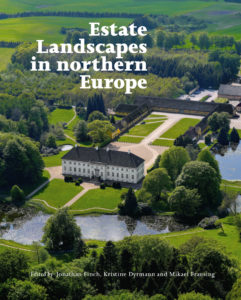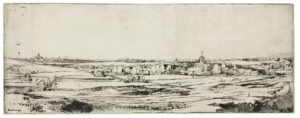First Publication from ENCOUNTER
Book release May 2019
 Estate Landscapes in Northern Europe
Estate Landscapes in Northern Europe
Edited by: Jonathan Finch, Kristine Dyrmann and Mikael Frausing
Publisher: Aarhus University Press
Estate Landscapes in Northern Europe will be released May 2019 and is the first product of the collaboration of researchers from Norway, Germany, Sweden, the United Kingdom, Denmark, and the Netherlands, joined together in ENCOUNTER – the European Network for Country House and Estate Research.
Estate Landscapes in northern Europe is the first study of the role of the landed estate as an agent in the shaping of landscapes and societies across northern Europe over the past five centuries. Exploring the fascinating variations in manorial worlds, the present volume adopts a new and broader perspective on estate landscapes.

Harewood House, West Yorkshire, UK. Harewood House was built between 1758 and 1771 for Edwin Lascelles, whose family made their fortune in the West In-dies. The parkland was laid out over the same period by Lancelot ‘Capability’ Brown and epitomizes the late-eighteenth cen¬tury taste for a more informal naturalistic landscape. Small enclosed fields from the seventeenth century were replaced by park¬land that could be grazed, just as it is today, although some hedgerow trees were retained to add interest within the park, such as those in the foreground. By the early-nine¬teenth century all arable cultivation had been removed from the view of the house, which was screened by extensive perimeter plantations.
Estate – or manorial – landscapes were distinctive elements within the historic landscape and created their own character. Marked by larger scale fields associated with the home or demesne farm as well as a higher proportion of woodland and timber trees, these landscapes reflected the scale of the resources available to the landowner and the control they exerted over the local communities. But they also represented the performative aspects of life for the elite, such as their engagement with hunting.
While existing works have tended to emphasize the economic and agricultural aspect of estate landscapes, this volume draws out the social, cultural and political impact of manors and estates on landscapes throughout northern Europe. The chapters provide insights into a broad range of histories, such as the social worlds of burghers and nobility in the Dutch Republic, or the relationship between the distribution of land and the agitation for electoral reform in nineteenth-century England. In Scandinavia, the impact of the reformation and conquest in Norway is balanced against the continuity of ownership in Sweden, where developing the natural resources for industrial enterprise such as ironworks and sawmills brought in new owners.
For more information, contact:
Jonathan Finch (jonathan.finch@york.ac.uk), Kristine Dyrmann (kd@gammelestrup.dk) or Mikael Frausing (hismf@cas.au.dk)

Saxenburg near Bloemendaal, in the dunes the town of Haarlem. The painter Rembrandt visited the owner of Saxenburg, from whom he had bought his own house in Amsterdam; etching by Rembrandt, 1651. (Rijksmuseum, Amsterdam)
Contributions:
Jonathan Finch and Kristine Dyrmann: “Estate Landscapes in Northern Europe: an introduction”
Mikkel Venborg Pedersen: “Power, Grace and Authority: The Cultural Landscape of Danish Estates c. 1600-2000″
Jonathan Finch: “Making Modern England: The ‘New Domesday’ and Estate Landscapes during the Late-Nineteenth Century”
Göran Ulväng: “The Swedish Manor 1750-1950 – Decline or Continuity?”
Carsten Porskrog Rasmussen: “The ‘Dukeries’ around Sonderborg: An early modern manorial landscape between Scandinavia and Germany”
Daniel Menning: “Nobility, Peasantry and Estates in southwestern Germany,
from the eighteenth to the twentieth century”
Yme Kuiper: “Country Houses and Estates in Dutch urban and rural history 1600-1900”
Arne Bugge Amundsen: “Reformation, Manors and Nobility in Norway 1500-1821”
Jonathan Finch: “Estate Landscapes in Northern Europe: a new agenda”